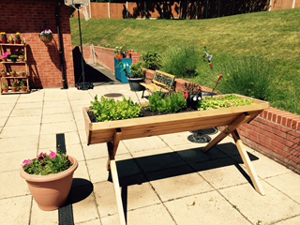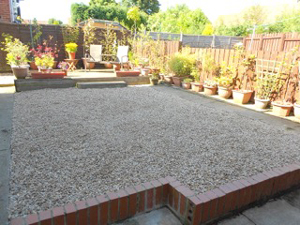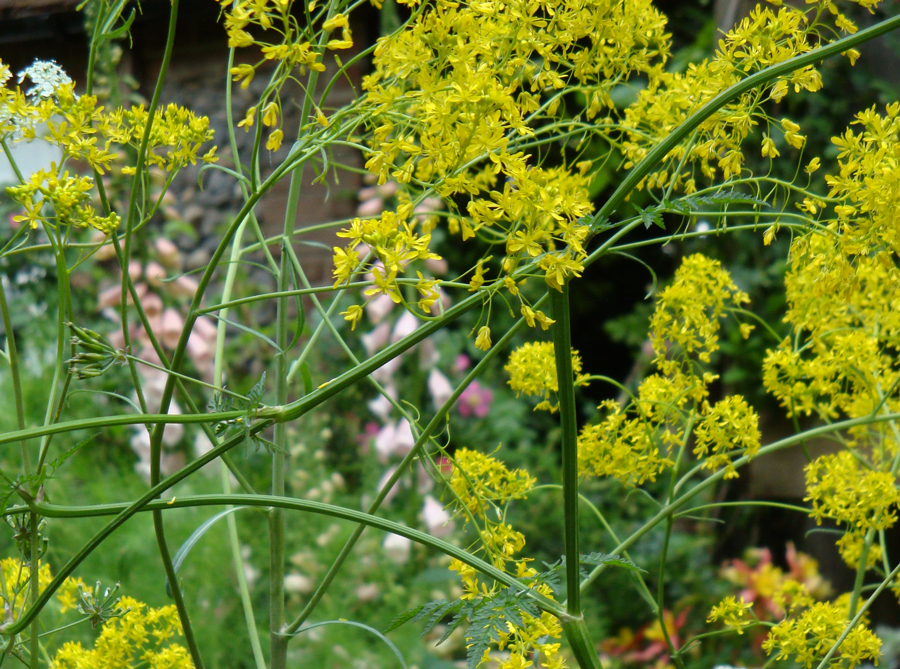Gardening for Disabled Trust celebrates 50 years
Reckless Gardener’s Sandy Felton talks to two volunteers from the Gardening for Disabled Trust (GDT) and discovers how the charity works and why it’s important to encourage gardeners to continue gardening despite disability.
This year marks the 50th anniversary of the Gardening for Disabled Trust, formed in 1968 as an entirely voluntary organisation to encourage gardeners to continue gardening despite disability, accident or advancing illness.
Rosie Kefford and Anna Matthews both volunteer with the Trust and they are keen to promote the work of GDT and the charity’s value in helping to make gardening easier for those with a visual, mental or physical disability.
 Rosie explains that it was on a visit to a Cheshire Home garden that founder Peggy Kinsey, a keen gardener herself, identified that the gardens at the Home could be put to better use and were not being actively used by residents. This led her on a campaign for better outdoor facilities so that the residents could enjoy the garden more.
Rosie explains that it was on a visit to a Cheshire Home garden that founder Peggy Kinsey, a keen gardener herself, identified that the gardens at the Home could be put to better use and were not being actively used by residents. This led her on a campaign for better outdoor facilities so that the residents could enjoy the garden more.
Peggy started fundraising for garden equipment for those residents who might want to actively work in the garden and it was these initial first steps that led to the formation of the Gardening for Disabled Trust, which is run from the Weald of Kent but helps people all over the UK.
Peggy’s visit was before the 1970 legislation which gave disabled people the rights to equal access to recreational facilities – so clearly Peggy could see the problem and was very forward in her thinking for the time.
 The ethos of the Trust is about helping people continue to enjoy the benefits and pleasure of gardening. The charity is run by a committee, who both fundraise and decide on how the funds should be spent. They are all volunteers and all the money raised by the charity is given away in the form of grants.
The ethos of the Trust is about helping people continue to enjoy the benefits and pleasure of gardening. The charity is run by a committee, who both fundraise and decide on how the funds should be spent. They are all volunteers and all the money raised by the charity is given away in the form of grants.
The grants are all in the form of financial support to purchase equipment or to adapt a garden. Rosie explains that the most common request is for raised beds/planters or for adapting gardens to make them more accessible – ramps for example, or making steps safe or levelling uneven parts of the garden. (raised planter project pictured right)
In the late 1960s/1970s less was known about gardening with a disability and the Trust’s committee decided that it would be a good idea to regularly share information. To this end they founded a Garden Club as part of their work. Today, the club still exists and offers a platform to share experiences that may help overcome gardening problems.
The Trust’s annual income is raised through donations, legacies or fund-raising events and these are wide and varied. Gardens may be opened to raise money for the Trust, coffee mornings held, special talks given or plant fairs organised. One of their main events will be a specialist plant fair taking place in the stunning grounds of Wealden House in Cranbrook on 2nd May 2018.
 There are lots of ways the public can support the Trust, not only by attending any of their events, which are always friendly and fun, but also by joining their special ‘Flower Power’ social media campaign, which will launch in March – look out for #GDTFlowerpower on Twitter
There are lots of ways the public can support the Trust, not only by attending any of their events, which are always friendly and fun, but also by joining their special ‘Flower Power’ social media campaign, which will launch in March – look out for #GDTFlowerpower on Twitter
You can also head to the Trust’s website and donate – www.gardeningfordisabledtrust.org.uk or find them on Just Giving
Anna Matthews is a professional gardener who volunteered to fundraise with the Trust after seeing an advert for GDT in her parish magazine. She points out that she hadn’t really realised how many people had gardens but couldn’t enjoy them because of access issues: “A common problem is beds and borders that are too low,” she says. “Even small changes can transform a garden for a disabled person. The letters we receive from successful applicants really proves this,” she added.
Celebrations for the 50th anniversary are in the planning and will be announced on the GDT website: “This also has a lot of information on it,” explains Rosie. “We have a special event planned for later in the summer but events are happening throughout the year,” she added.
As a disabled gardener myself I appreciate the problems that those of us with limited mobility, advancing years or long-term illness encounter. In 2017 a feature in The Telegraph pointed out that in Britain there are more than 10 million disabled people, and one in three over 55s have a disability of some sort. The Royal Horticultural Society (RHS) has the positive message that in most cases it is still possible to enjoy gardening with disabilities. There is a wealth of information on their website with links offering an excellent wide range of sources of help. Please link here.
Today, there is also an increase in specialist gardening tools and equipment as well as a wider choice of raised beds, accessible ramps and suitable materials for wide paths.
The GDT website has several testimonials from clients who have received the benefit of a grant. These are not major restoration grants, they are small projects that can help the recipient in simple but positive ways. Raised beds for a wheelchair gardener; new paving slabs to enable easier and safer access; particularly for wheelchair users or a grant towards new flower beds that are simple and practical to access.
 The benefits to health both mental and physical of gardening are now well documented. Organisations like Gardening for Disabled Trust go a long way to helping those of us less able to continue gardening – as GDT point out ‘don’t let disability, age or accident stop you‘.
The benefits to health both mental and physical of gardening are now well documented. Organisations like Gardening for Disabled Trust go a long way to helping those of us less able to continue gardening – as GDT point out ‘don’t let disability, age or accident stop you‘.
GDT cannot do this without funds, so we wish them well in their fundraising efforts in their 50th anniversary year, and if you would like to donate to their work you can do so by logging on to their website: https://gardeningfordisabledtrust.org.uk/the-trust/make-a-donation/
The Trust will also give you helpful advice on organising a fundraising event.


